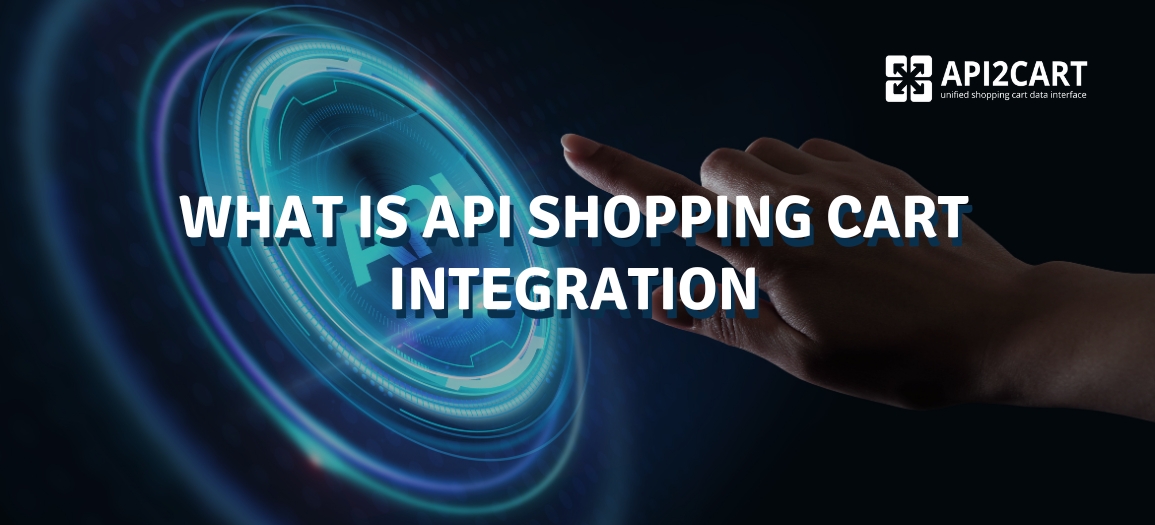
In the eCommerce market, developing integration with an API shopping cart can be quite complicated and time-consuming. Rightly guiding and smoothly integrating with shopping carts requires only careful planning and the right approach.
So, if you develop eCommerce software for store owners who run stores online, the integration of shopping cart APIs is essential. In the following, we take a look at other aspects of shopping cart API integration and how to make development easily integrated with eCommerce APIs.
What Shopping Cart API Is?
A shopping cart API is a special kind of access that permits different kinds of software to retrieve data contained in online stores. Designating a shopping cart as an open platform, you may establish its sequential connection with your own software through the API and then extract from it relevant records of products sold or goods shipped, categories (via their names) according to which things are classified within such stores; customers born in certain birth-years that recorded dates for making his record cards came first among priorities when they encountered other restrictions on
For example, inventory management software vendors can use shopping cart API to connect their products with different platforms and so get stores 'products based on a platform. Later, such solutions can even update and sync this data across clients' various sales channels.
This means that after being connected to several platforms, data is easy to sync and quick for software operations not only on clients 'websites but also in their online stores. During this process, the API is what links your software and their shopping cart in such a way that they can communicate with one another.
What is Shopping Cart Integration?
The integration process involves establishing a dependable connection between eCommerce software (multichannel systems, inventory management systems, or warehouse management services) and shopping carts (such as Magento, WooCommerce, Shopify, PrestaShop, etc.).
Coding and programming languages are used to extract data and set up the connection automatically to connect two systems. To illustrate this idea, we can examine well-known shopping cart API instances.
Here are descriptions of popular eCommerce platforms and marketplace APIs:
- Walmart API
Walmart is an online marketplace with thousands of sellers in the U.S. and Canada. Walmart has two groups of APIs: Item API and Transaction API. These APIs allow users to manage Walmart items, prices, inventories, and orders. Developing integration with the Walmart API is a complex process that may take months to complete.
- Magento API
Magento is a popular platform for integration. It supports JSON and XML formats and has four methods for managing e-store data. These methods are POST, PUT, GET, and DELETE. Magento uses XML-RPC clients for communication and has both SOAP and REST APIs.
- Amazon API
Amazon API lets eCommerce software exchange data like product listings, orders, payments, reports, etc. It also allows retrieval of seller profiles, product reviews, and customer feedback. However, communication is limited to CSV files or XML, requiring specific skills for interaction and information retrieval.
- Shopify API
Shopify is a widely-used shopping cart with 1 million users worldwide and is integrated with eCommerce software vendors.
Shopify API enables eCommerce software vendors to create accessible tools that interact with Shopify, utilizing customized methods for working with products, categories, customers, and orders and supporting JSON and XML formats.
- eBay API
When integrating your software, consider eBay, which has over 178 million active monthly users and 1 million product listings. Software vendors can use the eBay API to display product listings, view customer and product information, get categories, retrieve a complete item list, and perform other tasks.
What Are The Primary Challenges Associated With Integration?
One of the biggest challenges businesses face when it comes to eCommerce integration is doing it without the help of third-party solutions. This process can be difficult and requires a lot of attention to detail. When creating a shopping cart integration, it's essential to keep a few key challenges in mind.
For example, you must ensure your integration is secure, reliable, and user-friendly. Additionally, you'll need to ensure it works seamlessly with your existing eCommerce platform.
There are also the most common complications, such as:
- Integrating with every eCommerce platform will require a significant investment of thousands of dollars.;
- It is recommended to have multiple integrations, but waiting for each integration to be developed and tested can cost potential clients. Each integration takes about a month to establish.
- When shopping platforms release new versions, it can be challenging to integrate them. You might need more precise information or data, and you'll have to spend time modifying the code you've written.
- API issues are common in eCommerce platforms and marketplaces, such as outdated and complicated documentation from Amazon, inaccurate documentation from Magento, and difficult-to-find documentation from Etsy. These issues can cause extra development time and investigations.
- Developing shopping cart integrations requires highly skilled developers due to significant technological complexities.
- Developing integrations manually can pose security threats to your software. Weak integrations make your system vulnerable to attackers who could steal data.
How to Develop Shopping Cart Integration on Ease
So that you're well aware of the importance of shopping cart API integration and know the top shopping cart APIs in 2023, it's time to find out how to connect with all of them at once.
Considering the challenges associated with manual integration and the importance of increasing the number of integrations required to cover all of your client's needs, it goes without saying that a unified solution is much better than a manual integration.
API2Cartconnects eCommerce software with multiple shopping carts and marketplaces simultaneously. A unified shopping cart integration API lets your software integrate with more than 40 eCommerce platforms in one go.
API2Cart allows you to add, delete, update, and modify data in all the client stores without any hassles. We provide over 100 API methods to work with store info like orders, products, customers, shipments, categories, etc.
API2Cart allows your software to reduce TCO, minimize time, financial investment, and decrease time spent on integration maintenance. You can try our service for free. Get a month's trial now to see how it works.
Contact us, and we will discover how API2Cart can help you establish a robust shopping cart API integration strategy.



